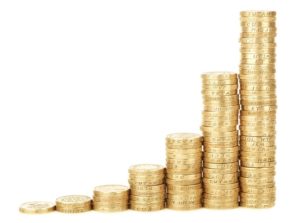 You may be asking yourself: should I open a stocks and shares ISA? In a world of unpredictable interest rates and high inflation, they offer investors the prospect of inflation-beating tax-free returns over the long term. However, there are potential risks to consider. This article explores whether a stocks and shares ISA could be the right option for you.
You may be asking yourself: should I open a stocks and shares ISA? In a world of unpredictable interest rates and high inflation, they offer investors the prospect of inflation-beating tax-free returns over the long term. However, there are potential risks to consider. This article explores whether a stocks and shares ISA could be the right option for you.
What is a stocks and shares ISA and how is it different to a cash ISA?
A stocks and shares ISA is a type of account, known as a ‘tax wrapper’, which can be set up with an online fund supermarket, stockbroker, wealth manager, robo-adviser or bank. A combination of investments – ranging from funds to individual shares – can be held within a stocks and shares ISA tax-free. The way the portfolio is constructed will come down to your preferences, objectives and risk profile, as well as the investment options that are available via your ISA provider.
A cash ISA offers the same tax benefits but only holds cash. This means the process to select a cash ISA will come down to the interest rate on offer, and whether you wish to have access to the cash or prefer to lock into a higher fixed rate for a specified period. The best cash ISA rates available are shown in these ISA comparison tables.
How do stocks and shares ISAs work?
Investors can utilise their annual ISA allowance during the tax year, which starts on 6 April and ends on 5 April the following year. The ISA allowance for this tax year (2024/25) is £20,000 and can be spread across the following types of ISA: Stocks and Shares, Cash, Lifetime (good for first-time buyers) and Innovative Finance (which holds peer-to-peer loans). Restrictions on how many ISAs you can open in each tax year have been removed, check out our article 'Can I have more than one ISA?' for more information.
If you decide to set up a stocks and shares ISA during this tax year, make sure you don’t exceed the £20,000 allowance. It is possible to withdraw and replenish money from the account within the same tax year if you open a ‘flexible stocks and shares ISA’. For example, if you invested £10,000 into a stocks and shares ISA during this tax year, this would leave you with an additional £10,000 to invest. If you then withdrew £5,000, you could still invest up to £15,000 during the same tax year - bringing the total up to £20,000. Unfortunately, there are not many flexible Stocks and Shares ISAs available with ISA providers blaming a lack of demand. However, the Bestinvest Flexible Stocks and Shares ISA is one of few Flexible Investment ISAs available. For more information about flexible ISAs, read our article 'What is a flexible ISA?'.
You can open a stocks and shares ISA at any point during the tax year and you will not come under any pressure to invest the cash straight away. Some people invest via lump-sum contributions, while others prefer to drip-feed money into the account on a regular basis. Of course, there is nothing stopping investors doing a combination of both.
What can you invest in using a stocks and shares ISA?
Unit trusts, shares, investment trusts, exchange-traded funds (ETFs), index funds, government bonds, corporate bonds and cash can all be held within a stocks and shares ISA. The investment options that are available will depend on your ISA provider.
How are stocks and shares ISAs taxed?
Income, dividends and capital gains can be accrued tax-free within a stocks and shares ISA, which makes this type of account very attractive for long-term savers. In theory, investors can benefit from compounding returns over time within the tax-free wrapper. Of course, much will depend on the performance of the underlying investments.
Alongside the £20,000 ISA allowance, investors can utilise their personal tax-free income allowance of £12,570 and a £500 dividend allowance during this tax year.
How many stocks and shares ISAs can you have?
You can set up one stocks and shares ISA each tax year, alongside a cash, lifetime and innovative finance ISA. Your annual tax-free allowance can be split between different ISAs as you see fit. Over the years, you may find that you end up with multiple stocks and shares ISAs.
Can you transfer a stocks and shares ISA?
As it can prove time-consuming and inefficient to administer multiple stocks and shares ISAs, you may wish to transfer existing ISAs into one account. Depending on your provider, this should be possible to do and won’t count towards your annual allowance.
Different types of ISA can be combined. For example, an existing cash ISA can be transferred into a stocks and shares ISA. If you decide to transfer an ISA that you have already paid into during the current tax year, you will have to transfer over the whole amount. You can read our article on ISA transfers explained here.
Choosing the right stocks and shares ISA
Finding the right stocks and shares ISA will depend on your investment experience and the type of service you are looking for. Would you like to select and manage your investments yourself via a fund supermarket? Alternatively, would you prefer for someone else to manage your ISA portfolio on your behalf? In this scenario, you might consider buying a pre-packaged diversified ‘fund of funds’ or using the services of a financial adviser, wealth manager or ‘robo-adviser’.
So-called robo-advisers, such as Moneyfarm*, Wealthify and Nutmeg are online investment managers which use computer models, known as algorithms, to manage portfolios. Their services are lower cost than traditional wealth managers but involve little to no human interaction with their customers.
Share trading apps become increasingly popular in recent years allowing investors to buy and sell shares commission-free. Popular share trading app Freetrade* allows investors to buy and sell shares within a Stocks and Shares ISA and Money to the Masses readers can receive a free share worth up to £100 when they sign up. Check out our independent Freetrade review for more information.
The DIY route
If you feel happier selecting and managing your own investments, a good starting point is to think about your objectives, time-horizon and attitude to risk. These factors will have a bearing on the types of investment you make and whether you are investing for income and/or growth.
Before you start investing via a self-select ISA, you may consider completing an online risk questionnaire to shed some light on your attitude to risk. Finametrica, for example, offers a risk profiling service for private investors.
Your previous investment experience and knowledge will also influence whether you opt for funds, investment trusts, index funds, ETFs, direct shares or bonds within your ISA. Before choosing a broker or fund platform, make sure they offer the investments you require.
The impact of charges on your returns
There are a host of charges associated with stocks and shares ISAs. These include:
- Platform administration charges
- Fund charges
- Charges to switch between funds
- Charges associated with buying and selling investments
- Bid/offer spread
- Transfer fees
You can either set up an ISA direct through a fund manager or bank or via a fund platform. It is typically cheaper to buy funds via a platform. In addition, ETFs and index funds tend to have lower annual management charges than actively managed funds. For example, an annual management charge for an active fund typically ranges from 0.60% to 0.80%, while passively managed funds range from 0.10% to 0.30%.
However, like anything in life - the devil is in the detail. New rules, known as Mifid II, introduced in 2018 have made it easier to identify other hidden charges, such as transaction and trading costs.
For example, FE Trustnet looked at the total costs for the 100 most-researched funds by financial advisers and wealth managers. They found the average ongoing charges figure (OCF) was 0.88%. However, the total cost of ownership rose to 1.11% once transaction charges were included.
The Financial Times and consultancy Lang Cat carried out similar research and found the same trend amongst index funds. For example, the BlackRock iShares FTSE UK All Stocks Gilt Tracker fund had an OCF of 0.20%, but this jumped to 0.75% once platform and transaction costs were factored in.
Administration charges vary depending on the fund supermarket or broker. For example, some platforms levy an annual percentage charge based on the value of your investments, while others, Interactive Investor* is a good example, carry a fixed fee. The headline platform charge typically ranges from 0.15% to 0.45%. Meanwhile, underlying dealing charges for different types of investments vary from platform to platform.
The collective impact of charges on returns can be profound. For example, the European regulator, the European Securities and Markets Authority (ESMA), found that ongoing fees, one-off charges and inflation reduced fund returns by 29% on average between 2013 and 2015.
You can compare costs and get more in-depth information about charges in our article 'The best stocks and shares investments ISA (and cheapest fund platform)'.
How to choose the best-performing funds for your ISA
Setting up a stocks and shares ISA is very different to picking a cash ISA. The interest rate and flexibility on offer will determine which cash ISA you choose. However, the performance of a stocks and shares ISA is unpredictable and will depend on the investments that are selected.
There are thousands of funds available to buy, so it can feel overwhelming when it comes to deciding what will make it into the portfolio. On the positive side, there are plenty of tools and research available online to help investors to make investment decisions.
Money to the Masses’ 80-20 Investor Service is a prime example. It uses a unique algorithm and research to identify the best funds to invest in. We analyse thousands of unit trusts, investment trusts and ETFs to produce a shortlist of funds that should be available to buy on your chosen platform.
Since launch, the portfolio has performed better than the market, passive investment strategies and 90% of professional fund managers. You can start a free trial or find out more about 80-20 here.
Morningstar also offers a range of tools and research to help investors to screen funds. Meanwhile, most platforms produce research on their ‘best buy’ fund lists, such as Interactive Investor's* ii Super 60, Hargreaves Lansdown's* Wealth shortlist’ and Fidelity’s* ‘Select 50’. This research can be used as a starting point to inform your thinking and provide some insight into a fund’s investment process and track record.
Alternatively, read our article ‘The best performing funds to invest in right now’
How do you buy a stocks and shares ISA?
First of all, you need to decide on an investment platform or broker. Popular brokers include Hargreaves Lansdown*, Bestinvest, Interactive Investor*, AJ Bell*, Fidelity* and Charles Stanley*.
Once you have decided which platform or broker to go with, you will need to complete the following steps to open a self-select stocks and shares ISA:
- Personal details - the ISA provider will require your address, nationality, date of birth, phone number and national insurance number. They are also likely to ask for ID and proof of address.
- Choose how you wish to invest – specify whether you want to make a lump sum contribution, set up regular monthly instalments or do both.
- Payment details – once these are completed and the ISA provider has verified your details, the account will be set up. You can then set up your login details.
- Select your investments (optional) – if you already know how you wish to invest some or all of your ISA, you can start to trade on the account. You may also wish to set up stop-loss and limit orders for stocks and investment trusts. This sets a target price to either buy or sell shares at.
- Account settings – the final step is to update your settings and set your preferences. These include paperless reporting and fund alerts.
Robo-adviser sign-up
If you appoint a professional to manage your ISA, the sign-up process will be different. For example, a robo-adviser like Wealthify, Nutmeg, Bestinvest and Moneyfarm* will want to know more about your attitude to risk and investment time horizon (as well as your personal details). After answering their questions online, you will select a portfolio from their range that suits your objectives and risk profile. You can check out our independent reviews of each of the robo-adviser's highlighted above by clicking on the links.
Are stocks and shares ISAs worth it?
With inflation running at multi-decade highs, it is understandable that investors are looking beyond cash ISAs. As of October 2024, the best variable cash ISA rate on offer stands at around 5.10%. This level of interest will not protect investors from the ravages of inflation.
In contrast, stocks and shares ISAs can provide investors with the prospect of inflation-beating returns over time within a tax-free wrapper. However, the word ‘prospect’ is important here; returns aren’t guaranteed and much will come down to what is in your portfolio. Alternatively, if you appoint a professional to manage your stocks and shares ISA, you are relying on their skill to beat inflation over time.
The good news is that stocks and shares ISAs have broadly performed well in recent years. Research from Moneyfacts.co.uk found the average Stocks and Shares ISA returned 13.55% in the 2020/21 tax year. In contrast, the average interest rate available for fixed and variable rate cash ISAs at the time stood at just 0.63%. However, average returns on Stocks and Shares ISAs have dipped in recent years due to volatility in investment markets. At the same time, rising interest rates have helped to improve average Cash ISA rates. We have provided a summary of the average returns for both Cash and Stocks and Shares ISAs for the last three years below.
Cash ISA vs Stocks and Shares ISA average returns
| Average Stocks and Shares ISA return | Average Cash ISA return | |
| 2020/21 | +13.55% | +0.63% |
| 2021/22 | +6.92% | +0.51% |
| 2022/23 | -3.27% | +1.71% |
| 2023/24 | +2.80% | +3.73% |
Source: Moneyfacts
If you are deciding between the best cash ISA or best stocks and shares ISA, consider your investment timeframe and capacity for loss. If you need access to your savings in the very short term, a stocks and shares ISA may not be the right option for you.
However, if you have a longer-term investment horizon and are willing to accept some stock market volatility along the way, it could make sense to invest some of your savings into a stocks and shares ISA. You can top up the portfolio in future tax years. Remember, it is always a good idea to hold back some of your savings in cash in case something unforeseen crops up.
Any first time investor should outline their objectives from the outset. Ultimately, what is the money going to be used for? This will influence how much risk they are willing to take and whether they wish to invest with a growth or income bias.
When it comes to selecting investments, do as much research as possible and monitor the portfolio on an ongoing basis. Are your investments performing in line with your expectations? Most of all, try not to panic if markets tumble. Volatility is part and parcel of investing in the stock market.
If a link has an * beside it this means that it is an affiliated link. If you go via the link Money to the Masses may receive a small fee which helps keep Money to the Masses free to use. But as you can clearly see this has in no way influenced the above editorial. The following links can be used if you do not wish to help Money to the Masses or take advantage of the exclusive Money to the Masses offers - Wealthify, Moneyfarm, Interactive Investor, Fidelity, Hargreaves Lansdown, Charles Stanley and AJ Bell.



